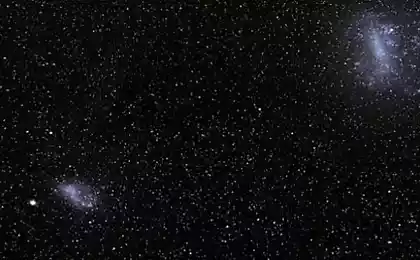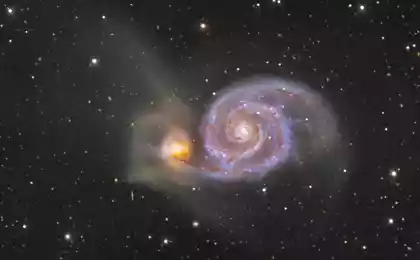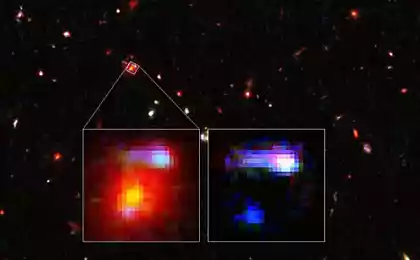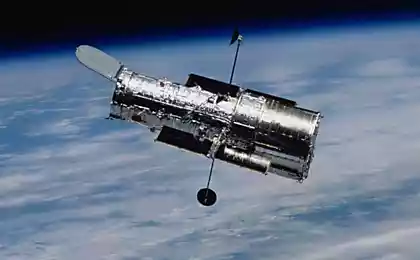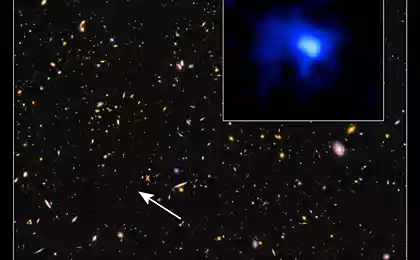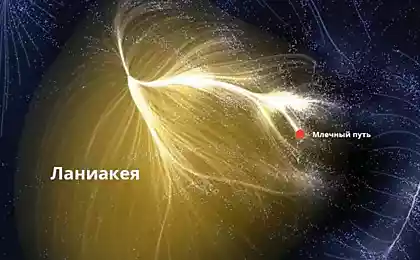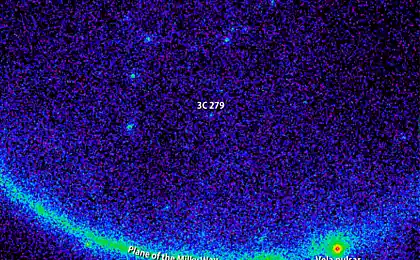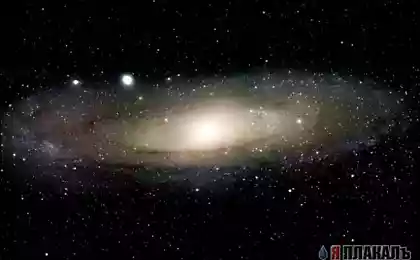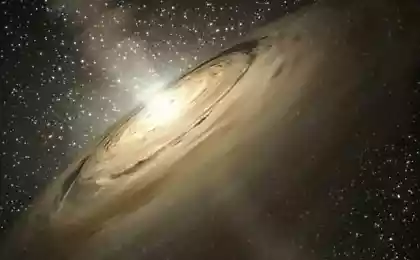573
Galaxy simply packed with exoplanets!
Discovery just tumbled out of the blue ... confirmed the discovery of Kepler 11 other planetary systems. Generally speaking, in a batch of these findings can be seen to change the approach to science. Rather than try to discover the world one by one, in the modern world to create a technology that allows you to put the matter on a conveyor belt, and then collect the cream in the form of publications, academic recognition and various awards up to the Nobel. And, in my opinion, a team from Ames, who built, launched and is now working with Kepler, is worthy of the Nobel Prize.

NASA's Kepler mission has discovered 11 planetary systems containing 26 planets. This discovery doubles the number of confirmed candidates for planets discovered by Kepler and triples the number of known planetary systems with more than one planet. They are very close to their suns, ranged in size from a half radius of the Earth to Jupiter-like giants. 15 of them can fit in a range of sizes from Earth to Neptune and in order to determine which of them - gas giants, and which are similar to the Earth, further observation. Circulation period of the range from 6 to 143 days, all the planets are located at distances from their stars - to the orbit of Venus.
"Prior to the Kepler mission, we knew all of the 500 planets throughout our skies" - says Doug Hudgins (Doug Hudgins), Kepler program scientist of NASA headquarters in Washington. "Now, on the part of the sky all of a palm Kepler discovered more than 60 planets and more than 2,300 candidates. All this tells us that the Galaxy is definitely just packed with planets - a variety of types, sizes and orbital parameters. »
Kepler detects exoplanets simultaneous measurement of periodic oscillations of brightness when a planet passes across the disk of stars, once in 150 thousand stars.
"Confirmation that the change in brightness of the star caused by a planet requires additional observations and analysis of the long-term." - Said Eric Ford (Eric Ford) professor of astronomy at the University of Florida and the head of research, Kepler discovered the 23 and 24. "We used a new method that significantly accelerated the process of checking the opening. »
The discovered systems contain from 2 to 5 densely distributed in space planets with small periods of treatment. In such densely packed systems, the total force of attraction of the planets causes some planets to accelerate, and others - to slow down, resulting in an increase or decrease in the period of revolution of the planets. Kepler can detect such changes. This method is called transit time variations.
Systems such variations can be opened without the need for confirmation by ground-based telescopes, which can take a long time. This technology also enhances the ability of Kepler finding planetary systems have a dim and distant stars.
Five systems (Kepler 25, 27, 30, 31, 33) comprises a pair of planets where the inner orbits the star twice as fast than the outside. In the four systems (Kepler 23, 24, 28 and 32) inner planet makes 3 turns and the outer - 2.
In the most massive stars in the open - Kepler 33 - most of all the planets - 5 sizes ranging from 1.5 to 5 Earth radii. All of them are closer than Mercury.
The picture is clickable.
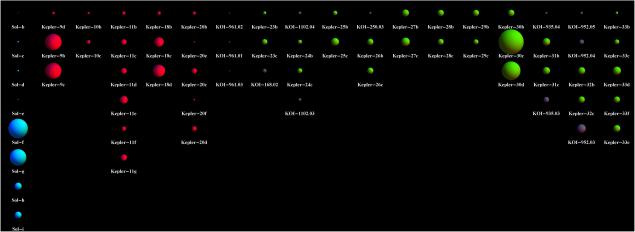
Internet users help to detect planets
The planets discovered using a telescope NASA "Kepler" worth $ 600 million. It was launched into space in March 2009, and as astronomers hope to continue the search for extrasolar planets similar to Earth until at least November 2012. "The main task" Kepler "- the search for extrasolar planets comparable to the Earth, and located within the habitable zone," - said earlier Fraisse Francois of the Center for Astrophysics at Harvard University and the Smithsonian Institute in Cambridge (Massachusetts).
Any Internet user can take part, "hide and seek in space" - the search for planets using a telescope, "Kepler." On a special website publish images of stars, obtained with its help. Planets are looking for so-called transit method - to determine the decrease in brightness of the stars of the sky caused by the passage of Planet on their background. Have transits - the first sign that the star rotates at least one planet. At the time of dimming it passes between the "Kepler" and a star. If several people are seen "transit phenomenon," noting them on the images, the scientists are beginning to explore them in more detail, and if you - first discovered the planet, you'll be listed among its discoverers.
www.nebulacast.com
www.rg.ru/2012/01/27/kepler-site.html < br /> www.ria.ru/science/20120127/550028850.html
anyone interested can still be seen here
From myself I will say that openly for nearly 800 planets (if not more).
py.sy. Kepler 11 planetary system
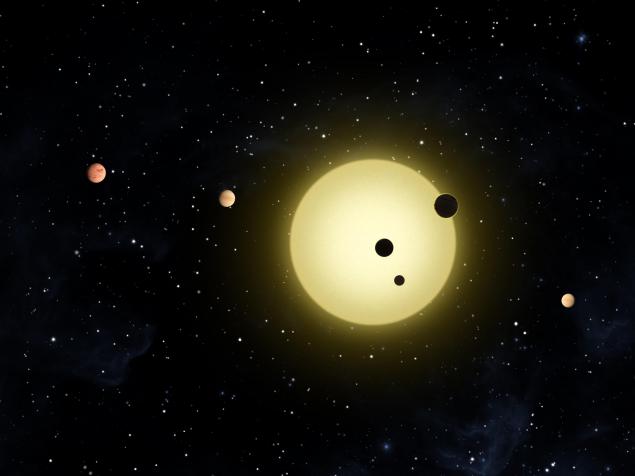
Source:

NASA's Kepler mission has discovered 11 planetary systems containing 26 planets. This discovery doubles the number of confirmed candidates for planets discovered by Kepler and triples the number of known planetary systems with more than one planet. They are very close to their suns, ranged in size from a half radius of the Earth to Jupiter-like giants. 15 of them can fit in a range of sizes from Earth to Neptune and in order to determine which of them - gas giants, and which are similar to the Earth, further observation. Circulation period of the range from 6 to 143 days, all the planets are located at distances from their stars - to the orbit of Venus.
"Prior to the Kepler mission, we knew all of the 500 planets throughout our skies" - says Doug Hudgins (Doug Hudgins), Kepler program scientist of NASA headquarters in Washington. "Now, on the part of the sky all of a palm Kepler discovered more than 60 planets and more than 2,300 candidates. All this tells us that the Galaxy is definitely just packed with planets - a variety of types, sizes and orbital parameters. »
Kepler detects exoplanets simultaneous measurement of periodic oscillations of brightness when a planet passes across the disk of stars, once in 150 thousand stars.
"Confirmation that the change in brightness of the star caused by a planet requires additional observations and analysis of the long-term." - Said Eric Ford (Eric Ford) professor of astronomy at the University of Florida and the head of research, Kepler discovered the 23 and 24. "We used a new method that significantly accelerated the process of checking the opening. »
The discovered systems contain from 2 to 5 densely distributed in space planets with small periods of treatment. In such densely packed systems, the total force of attraction of the planets causes some planets to accelerate, and others - to slow down, resulting in an increase or decrease in the period of revolution of the planets. Kepler can detect such changes. This method is called transit time variations.
Systems such variations can be opened without the need for confirmation by ground-based telescopes, which can take a long time. This technology also enhances the ability of Kepler finding planetary systems have a dim and distant stars.
Five systems (Kepler 25, 27, 30, 31, 33) comprises a pair of planets where the inner orbits the star twice as fast than the outside. In the four systems (Kepler 23, 24, 28 and 32) inner planet makes 3 turns and the outer - 2.
In the most massive stars in the open - Kepler 33 - most of all the planets - 5 sizes ranging from 1.5 to 5 Earth radii. All of them are closer than Mercury.
The picture is clickable.

Internet users help to detect planets
The planets discovered using a telescope NASA "Kepler" worth $ 600 million. It was launched into space in March 2009, and as astronomers hope to continue the search for extrasolar planets similar to Earth until at least November 2012. "The main task" Kepler "- the search for extrasolar planets comparable to the Earth, and located within the habitable zone," - said earlier Fraisse Francois of the Center for Astrophysics at Harvard University and the Smithsonian Institute in Cambridge (Massachusetts).
Any Internet user can take part, "hide and seek in space" - the search for planets using a telescope, "Kepler." On a special website publish images of stars, obtained with its help. Planets are looking for so-called transit method - to determine the decrease in brightness of the stars of the sky caused by the passage of Planet on their background. Have transits - the first sign that the star rotates at least one planet. At the time of dimming it passes between the "Kepler" and a star. If several people are seen "transit phenomenon," noting them on the images, the scientists are beginning to explore them in more detail, and if you - first discovered the planet, you'll be listed among its discoverers.
www.nebulacast.com
www.rg.ru/2012/01/27/kepler-site.html < br /> www.ria.ru/science/20120127/550028850.html
anyone interested can still be seen here
From myself I will say that openly for nearly 800 planets (if not more).
py.sy. Kepler 11 planetary system

Source:
